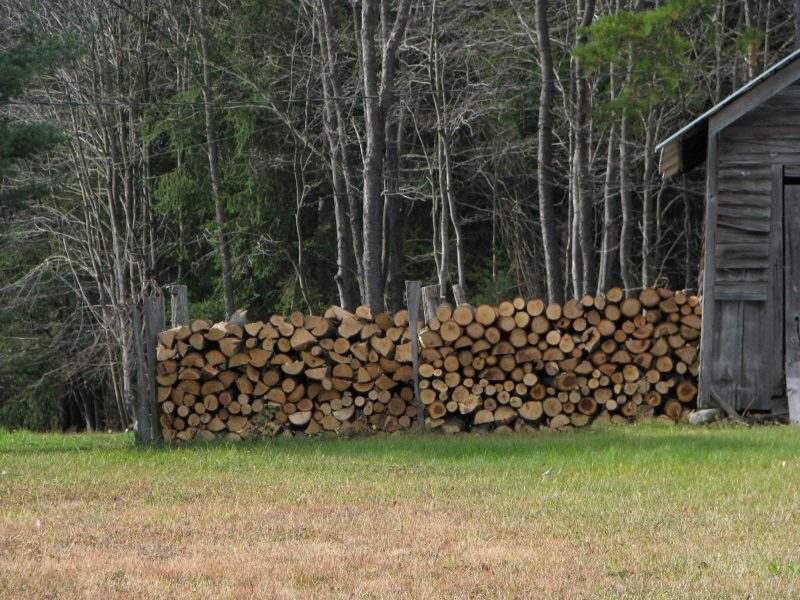” Winter is a season of recovery and preparation.” Paul Theroux
Part 2 of Firewood: Getting Ready for Winter 2019-2020!
Written by Jim Finley, Professor Emeritus, Forest Resources Management, Center for Private Forests at Penn State
University Park, PA – November 20, 2018
Leave the Deadwood
Interestingly many firewood gatherers focus on taking dead trees out of the forest. Research has repeatedly found that many of Pennsylvania’s privately-held forests could benefit from leaving more dead wood in place. Standing dead trees contribute important habitat for many wildlife species. Standing dead trees (snags) and dead parts of live trees offer both room and board for many kinds of wildlife. Tree cavities in live or dead trees are used by 35 species of birds and 20 species of mammals in Pennsylvania. Rotting and decaying wood on the forest floor provides cover and protection to many salamanders. At least 19 kinds of salamanders and 26 species of reptiles make some use of logs, stumps, bark, and slash piles in Pennsylvania’s forests. Ecologists believe dead wood is one of the greatest resources for animal species in the forest. (For more information on Dead Wood and Wildlife, visit https://extension.psu.edu/dead-wood-for-wildlife.
Cutting Live Trees
If deadwood is so important to wildlife, what makes good firewood? If you are thinking ahead and preparing firewood for next year, cutting live trees is really the way to go. By cutting live trees there is the opportunity to improve growing conditions for trees that remain. Individual trees in a forest compete for growing space to expand their leaf area. When tree crowns are “tight” up against each other and they move in the wind, they collide and, in the process, physically define their space – some trees gain more space and others lose. Understanding this, a firewood cutter can choose to provide space to a tree they want to improve by cutting a competing live tree.
Making decisions about which trees to leave involves many considerations. Note the point is which tree to leave, not which to cut. The tree left will continue to grow by increasing its crown area. A firewood cutter can “take the worst first;” leaving the best to grow. The tree cut might be selected by: crown condition, stem quality, defects, and species. Species is purposely last. A quick web search will find plenty of listings showing heat value per cord by tree species. Interestingly, all hardwood tree species have about the same number of BTUs per pound of wood – about 8,600. The important variable is pounds of wood per cubic foot, which can vary a lot. For comparison, a cubic foot of dry sugar maple weighs 44 pounds and basswood is 26 pounds. A pound of sugar maple has as much heat as a pound of basswood – you will need a larger volume of basswood.
Improving Your Woodlot
To learn more about how cutting firewood can improve our forests the US Forest Service has a very helpful guide titled “Improve your Woodlot by Cutting Firewood.” You can download a copy by visiting https://www.fs.usda.gov/naspf/resources/improve-your-woodlot-cutting-firewood-na-gr-6.
The Pennsylvania Forest Stewardship Program provides publications on a variety of topics related to woodland management. For a list of free publications, call 800 235 9473 (toll free), send an email to RNRext@psu.edu, or write to Forest Stewardship Program, The Pennsylvania State University, 416 Forest Resources Building, University Park, PA 16802. The Pennsylvania DCNR Bureau of Forestry, USDA Forest Service, Penn State Extension, and the Center for Private Forests at Penn State, in Partnership through Penn State’s Department of Ecosystem Science and Management, sponsor the Forest Stewardship Program in Pennsylvania.
[1] Epidemiology of Chain Saw Related Injuries, United States: 2009 through 2013. Advances in Emergency Medicine
Volume 2015, Article ID 459697, 4 pages. http://dx.doi.org/10.1155/2015/459697


